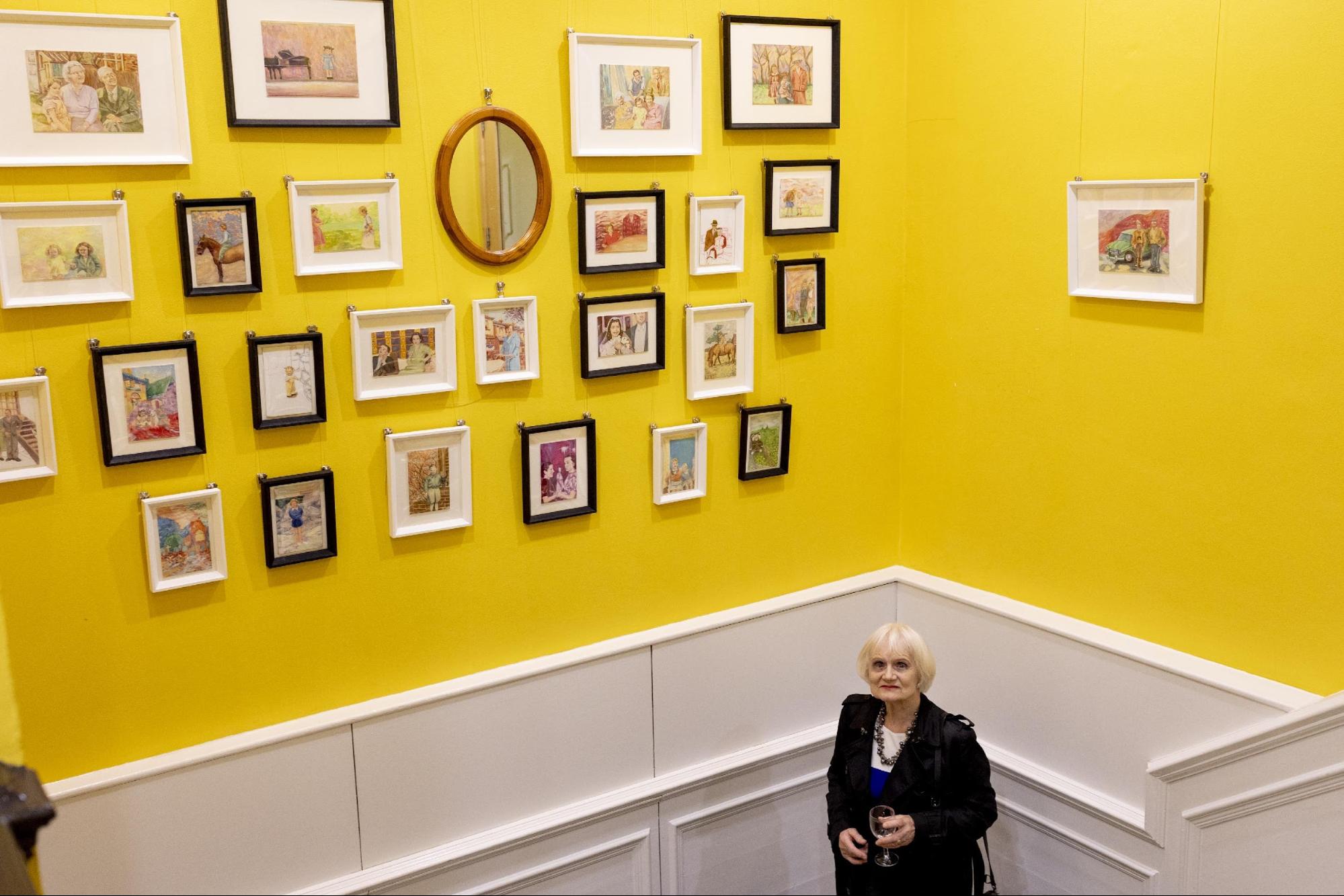In her solo exhibition From Home, held at Lauderdale House from September 11 to October 7, 2024, Chinese-born and London-based artist Xinan Yang presents her Missed series—a quietly powerful body of work that confronts themes of memory, belonging, and cultural displacement. Rooted in her doctoral research and lived experience of transnational migration, Yang’s practice navigates the complex interplay between absence and presence, intimacy and erasure.
The exhibition unfolds in two parts. The first features a series of small-format oil paintings based on second-hand family photographs collected from vintage markets across the UK. Rendered with blurred and softened facial features, these figures are stripped of personal identity and yet remain emotionally potent. Installed salon-style across a warm yellow wall, the paintings mimic the photo arrangements often seen in living rooms, evoking domestic familiarity. But what should be comforting is also uncanny—the familiar becomes unfamiliar.
The room is painted in a soft, muted yellow, deliberately chosen to evoke both domesticity and estrangement. At the center of the wall, a single mirror is hung—not to reflect the viewer’s image, but to implicate them in the act of looking. In this room, memory becomes spatial. The viewer is not merely observing art—they are inhabiting a curated space of memory, absence, and imagination.
Yang’s Missed paintings are modest in scale but conceptually dense. The images appear quiet, even understated at first glance, but their power accumulates through repetition and rhythm. As viewers move from one blurred face to another, they become part of an unspoken conversation—one about what is remembered, what is faded, and what is unknowable.
The use of second-hand photographs is more than an aesthetic choice; it is a critical strategy. By working from images of strangers, Yang engages with the politics of photography itself—its role in shaping family narratives, its claims to truth, and its gaps. The painted image, unlike a photo, slows time. It requires care. Her process resists the instantaneous logic of snapshots. In repainting what was once a private memory now rendered anonymous, Yang transforms these forgotten moments into meditative studies of belonging.
Her approach is grounded in Max Weber’s concept of Verstehen—“understanding through feeling.” Painting, for Yang, becomes a form of sociological inquiry. She observes, reinterprets, and imagines from within. She does not seek to reconstruct the lost identities in these photographs but instead honors their unknowability. The softening of facial features is not a concealment—it is an invitation. A gentle ambiguity where memory can unfold without being bound by identity.
The second half of the exhibition moves from archival recovery to internal myth-making. Larger canvases display Yang’s symbolic visual language:
• Birds, symbolising cyclical migration and the desire for spiritual return.
• Dogs, representing emotional substitution and the persistence of family ties.
• Moons, a recurring motif in her work, embody longing, rhythm, and reunion.

The poetics of absence extend beyond visual form into the spatial logic of the exhibition. The contrast between the dense arrangement of the Missed paintings and the openness of the symbolic works creates a rhythm of contraction and release. Viewers are invited to step in close, to examine small details, then to step back, to breathe into the larger compositions. This careful pacing echoes the emotional texture of diasporic memory—fragmented, uneven, nonlinear.

What distinguishes Yang’s work in the current contemporary field is her ability to hold contradiction without collapsing into aesthetic cliché. As an Asian woman artist working in the UK, her voice contributes to an ongoing redefinition of British visual culture—one that accounts for multiplicity, cultural layering, and transnational intimacy. She is not offering a definitive narrative of migration or memory, but rather proposing a visual and emotional space where such narratives can remain open, unpolished, and human.
In an age where images are increasingly fast, loud, and fleeting, Yang’s practice is a refusal. A refusal to rush, to flatten, to simplify. With Missed, she offers instead the slowness of empathy, the labor of remembrance, and the difficult tenderness of looking at what has been lost.



